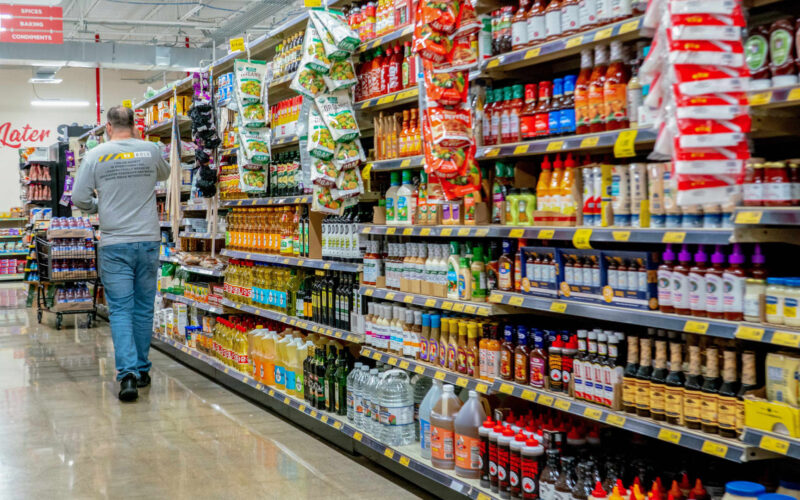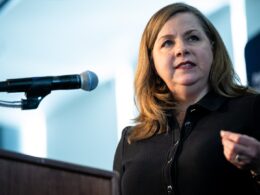A shopper at a grocery store in Dayton, Ohio, US, on Tuesday, Oct. 21, 2025.
Kyle Grillot | Bloomberg | Getty Images
The Bureau of Labor Statistics on Friday released its much-anticipated consumer price index report, delayed a week and a half because of the government shutdown.
Here are the five most important takeaways:
- While inflation is still running well ahead of the Federal Reserve’s 2% goal, it is showing no signs of runaway and in fact is easing at least a bit in some key areas. The headline gain of 0.3% monthly and 3% annually both were slightly below consensus forecasts. Same for ex-food and energy core, which ran at 0.2% and 3% respectively.
- Markets continued to price in a near-certainty for a Fed rate cut next week, and upped the odds for another in December, with just a 4% probability the central bank won’t ultimately ease two more times before the end of the year, according to the CME Group’s FedWatch.
- Aside from the headline numbers, the biggest watch point for markets was tariff and immigration impacts, which showed up … a little. Apparel prices rose 0.7% and sporting goods costs jumped 1%. But smartphone prices actually declined 2.2% and are down 14.9% year over year. Gardening and lawn care services, an immigration-related category, posted a 13.9% annual increase.
- Shelter costs are another key category, as they make up one-third of the weighting in the index. There was some relief on that front, with the index up just 0.2% monthly and holding at 3.6% annually. Owners equivalent rent, a critical component of shelter costs that asks homeowners what they could fetch in rent, rose just 0.1%, the smallest such move for the measure since November 2020.
- With government data collection and reports under suspension because of the shutdown, this BLS only compiled this report because of its role as a benchmark for Social Security cost of living adjustments. This, then, likely will be the last official data report released until the impasse is resolved.
What they’re saying:
“In aggregate today’s inflation readings are encouraging, albeit still above the Federal Reserve’s stated 2% inflation target. Yet, we think the overall inflation trend can continue to moderate over the next year … as inflation breakevens have recently suggested, allowing the Fed to maintain its bias toward rate cuts.” — Rick Rieder, head of fixed income at BlackRock and a finalist for Fed chair to succeed Jerome Powell next year.
“Look beneath the headline and what one sees on a year ago basis are large increases in the cost of food, meat, housing, and utilities. Middle class & down-market households experiencing a slowing pace of wage growth are clearly having difficulty adjusting to persisting increases in the cost of living … It’s only natural that those that inhibit the lower spur of the K ask: what is it that those celebrating a more modest increase in the pace of price increases see that indicates inflation is not eroding my bottom line & standard of living?” — Joseph Brusuelas, chief economist at RSK, on the K-shaped economy.
“Signs of spillovers from tariffs remain weak and support the view that tariff hikes will translate into a one-off bump in prices instead of persistent inflationary pressures,” Krishna Guha, head of global policy and central bank strategy at Evercore ISM.
Source link









